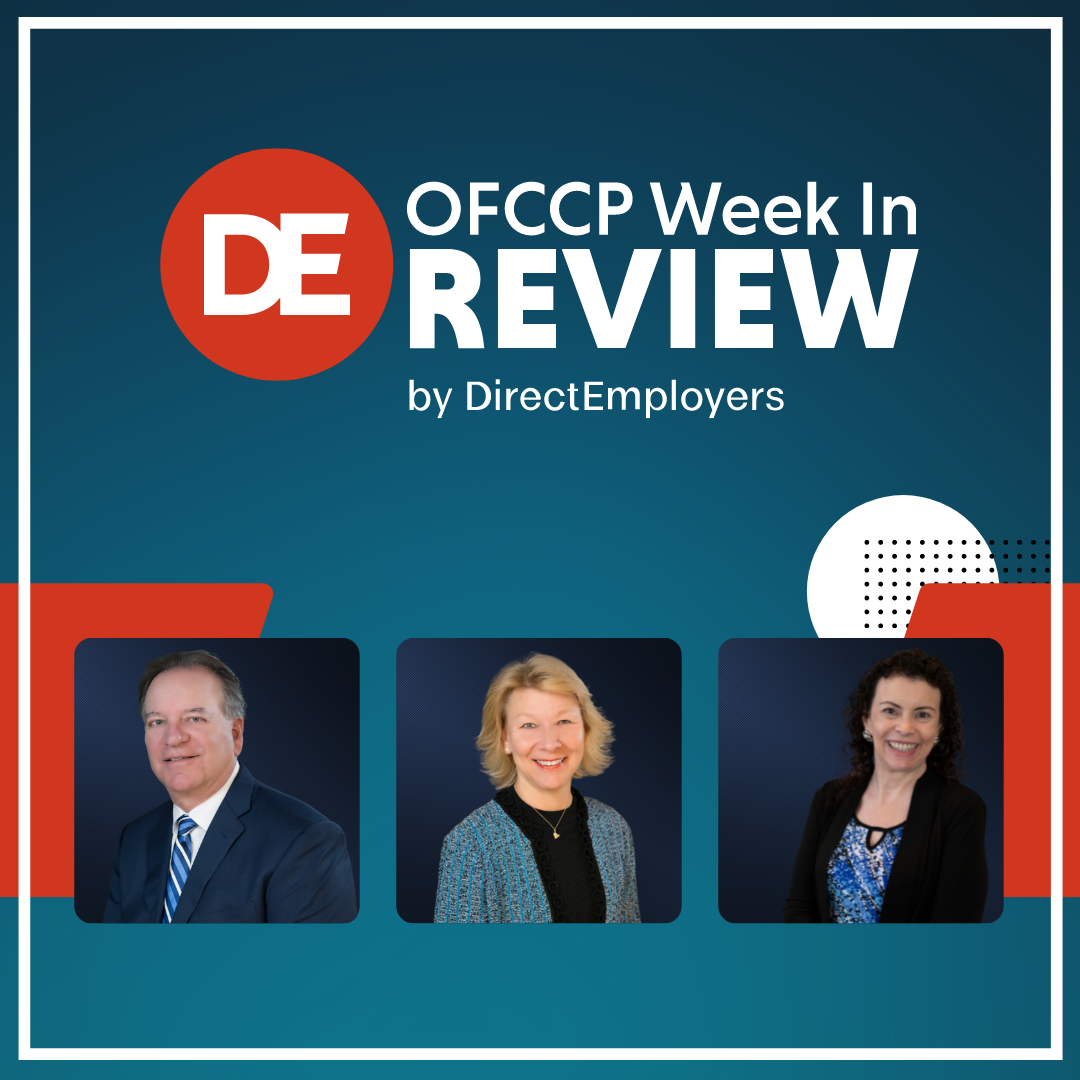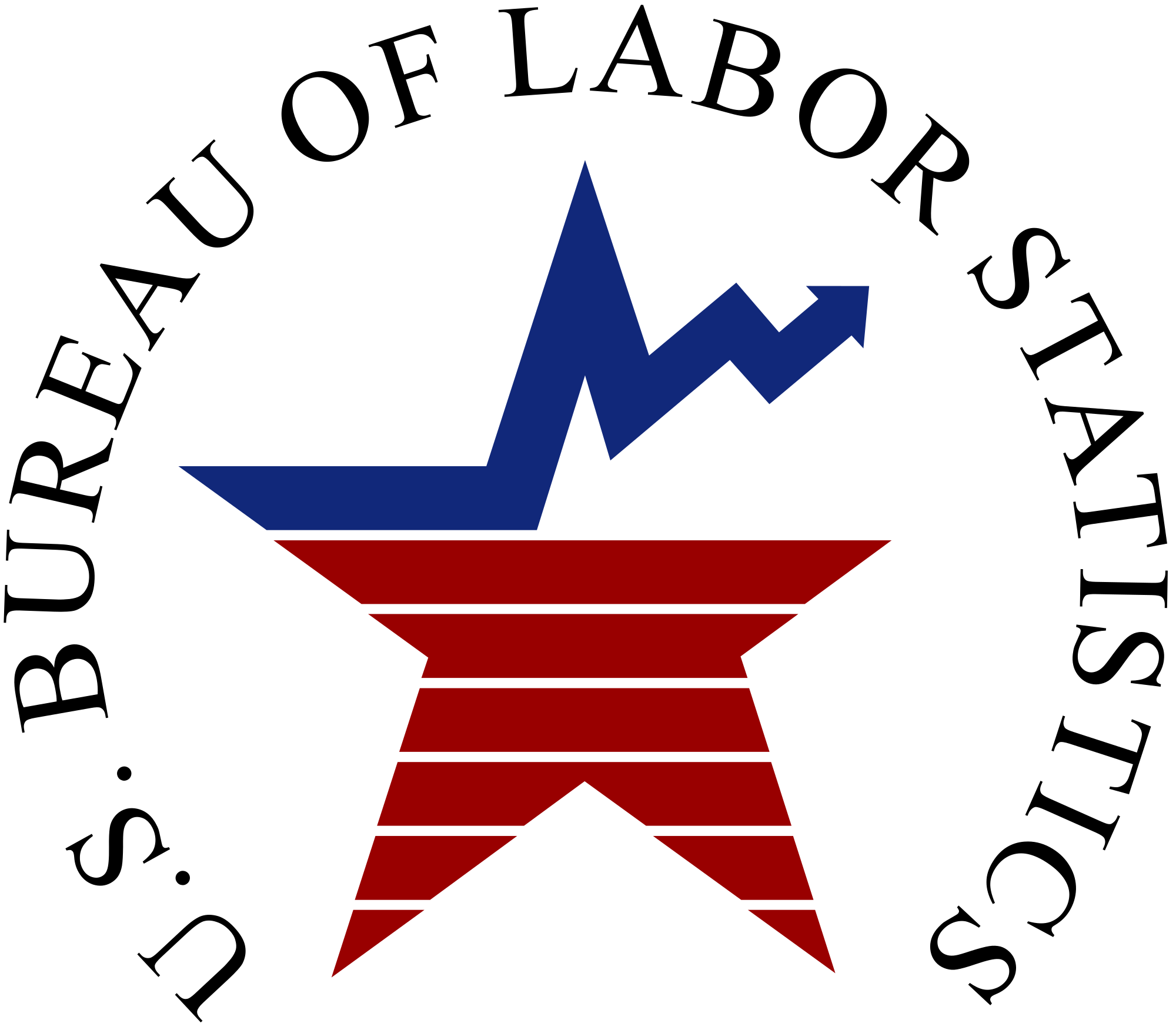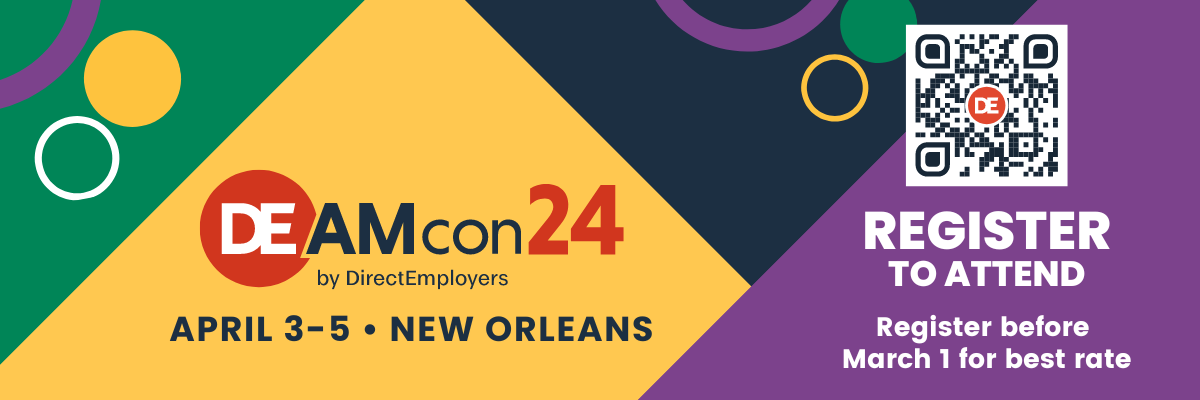
- Federal Trial Court Dismissed Novel Complaint Alleging Certain Algorithm-Based Applicant Screening Tools Discriminated Based on Race, Age, & Disability
- US DOL ETA Explained Its Lengthy NPRM to “Modernize Registered Apprenticeship Regulations”
- U.S. EEOC Commissioner Charges Continued to Rise in FY 2023
- In Brief
- New Publications
- Looking Ahead: Upcoming Date Reminders
Friday, January 19, 2024: Federal Trial Court Dismissed Novel Complaint Alleging Certain Algorithm-Based Applicant Screening Tools Discriminated Based on Race, Age, & Disability
Complaint Sought Class Action Certification
Judge Allowed Lead Plaintiff Opportunity to Revise Complaint

Employment Agency Theory
After ruling that the plaintiff sufficiently exhausted his administrative remedies, the court turned to the deficiencies of his complaint. The plaintiff claimed that, as an African-American man over the age of forty with anxiety and depression, he applied to 80 to 100 jobs with companies that use Workday’s screening tools and received not a single job offer. His complaint was deficient, however, because he did not allege facts to state a plausible claim that Workday is liable as an “employment agency” under the anti-discrimination statutes at issue, Judge Lin wrote. Specifically, he did not allege facts sufficient to state a claim that Workday was “procuring” employees for these companies, as required for Workday to qualify as an “employment agency.”
Still, the plaintiff contended that he could amend his complaint to fix those deficiencies by pleading additional facts, which he outlined in his brief opposing Workday’s motion to dismiss his complaint.
Indirect Employer & Agent Theories
Moreover, at the motion hearing and in his opposition brief, the plaintiff also identified two other potential legal bases for Workday’s liability: as an “indirect employer” and as an “agent.”
Finding that the plaintiff could potentially amend his complaint to sufficiently plead these legal theories, Judge Lin not only permitted him to do so but also guided him as to how to go about it. As to the “indirect employer” theory, the plaintiff must allege facts to establish Workday’s control over, participation in, or interference with the job application process, she instructed. For the agency theory, the plaintiff would need to provide factual allegations about companies delegating control to Workday over the hiring process.
Intentional Discrimination & Disparate Impact
The judge also found that the complaint lacked sufficient allegations to support the plaintiff’s claims of discrimination under either the intentional discrimination or disparate impact theories. Among other things, Judge Lin stated that the plaintiff failed to allege the type of jobs for which he applied, what his qualifications were for those jobs, or whether he got better results applying to similar jobs that did not use Workday.
He also did not adequately identify a specific employment practice. His complaint was not clear as to what or whose specific use of the referenced screening tools is allegedly discriminatory, the judge pointed out.
Finally, Judge Lin noted that he failed to plead a plausible theory of causation. He did not plead allegations sufficient to show a significant disparity sufficient to infer causation, nor did he cite any data, scientific literature, or personal experiences to support the theory that Workday’s screening tools had a discriminatory impact on a specific protected group.
Thursday, January 25, 2024: US DOL ETA Explained Its Lengthy NPRM to “Modernize Registered Apprenticeship Regulations”

The speakers (see slide 7) explained that the proposed substantive changes would revise the regulations at 29 CFR §29 addressing labor standards of apprenticeship and the governance of the National Apprenticeship System (last updated in 2008). The ETA did not propose any substantive changes to the current text of 29 CFR §30, which governs equal employment opportunity in apprenticeships (last updated in 2016). The agency only proposed technical and conforming adjustments to the Part 30 regulations (see slide 37). Notably, they said some of the proposed changes to the Part 29 regulations incorporate much of what is already in the Part 30 regulations.
The presenters did not take any questions or comments, telling attendees to save those for their formal comments on the NPRM. Comments on the NPRM are due on March 18, 2024. You may submit them here or here.
After providing some background information (slides 4 – 14), the speakers walked through the proposal’s three subparts (slide 15). The following embedded links and printed page references go to the relevant parts of the NPRM’s preamble:
- Subpart A: RA standards (starts at NPRM printed page 3144) updates key areas related to standards of apprenticeship, program registration, determining occupational suitability for apprenticeship training (i.e., “apprenticeability”), apprenticeship agreements, deregistration of programs, and embedding DEIA strategies. (See slides 16-23);
- Subpart B: Career Technical Education (“CTE”) programs (starts at NPRM printed page 3190) proposes to establish a new, student-centric model to register apprenticeships aligned to Perkins CTE programs. (See slides 24-29); and
- Subpart C: State Apprenticeship Agencies (“SAAs”) and performance (starts at NPRM printed page 3211) addresses the administration and coordination of the National Apprenticeship System through the modification of certain requirements and processes related to data reporting requirements and SAA governance. (See slides 30-36)
Thursday, January 25, 2024: U.S. EEOC Commissioner Charges Continued to Rise in FY 2023

As it did with its FY 2022 update (see our story here), the EEOC updated its webpage on Commissioner Charges and Directed Investigations on Thursday without any accompanying announcement. In addition to investigating discrimination charges filed by individuals, Congress authorized the EEOC to investigate possible discrimination under Title VII, the Americans with Disabilities Act, and the Genetic Information Nondiscrimination Act using Commissioner Charges. The rough equivalent to Commissioners’ Charges under the Age Discrimination in Employment Act and the Equal Pay Act are referred to as “Directed Investigations.”
The update included the following table which illustrates the number of charges initiated by each Commissioner in FYs 2020, 2021, 2022, and 2023. It shows that Commissioner Andera Lucas (R) filed the majority of charges in FY 2023 with fifteen charges, followed by Vice Chair Jocelyn Samuels (D) with eleven charges, and Commission Chair Charlotte Burrows (D) with eight. Kalpana Kotagal (D), the newest member of the Commission, who was sworn in on August 9, 2023, filed one charge. Commissioner Keith Sonderling (R) did not file any charges in FY 2023.
|
Commissioner Charges Signed |
|||||||
|---|---|---|---|---|---|---|---|
|
FY 2020 |
FY 2021 |
FY 2022 |
FY 2023 |
||||
| Charlotte A. Burrows | 1 | Charlotte A. Burrows | 2 | Charlotte A. Burrows | 8 | Charlotte A. Burrows | 8 |
| Janet Dhillon | 1 | Jocelyn Samuels | 1 | Jocelyn Samuels | 8 | Jocelyn Samuels | 11 |
| Victoria A. Lipnic | 1 | Keith E. Sonderling | 0 | Keith E. Sonderling | 1 | Keith E. Sonderling | 0 |
| Andrea R. Lucas | 0 | Andrea R. Lucas | 12 | Andrea R. Lucas | 15 | ||
| Janet Dhillon | 0 | Janet Dhillon | 0 | Kalpana Kotagal | 1 | ||
| Total | 3 | Total | 3 | Total | 29 | Total | 35 |
The following two graphs illustrate both total Commissioner Charges and total Directed Investigations from FY 2015 to FY 2023:
In Brief
Tuesday, January 23, 2024: BLS Annual Union Membership Report Showed Little Change from Last Year

The union membership rate of public-sector workers continued to be more than five times higher than the rate of private-sector workers. For public-sector workers, the rate was 32.5 percent in 2023, down slightly from 33.1 percent in 2022. For private-sector workers, the rate held steady at 6.0 percent. (See the BLS chart here.)
In a statement on the Report, Acting Secretary of Labor Julie Su did not address these percentages. Instead, she touted the “increase in union membership, with 139,000 more union members in 2023 than in 2022, meaning this country has 400,000 more union workers than we had in 2021.”
Editor’s Note: The Three Gradations of Inveracity: “Lies, Damned Lies, and Statistics.” What USDOL failed to report, however, is that despite the Herculean efforts of former Secretary of Labor Marty Walsh and current Assistant Secretary of Labor Julie Su to popularize and reinvigorate unions at USDOL, union participation in the U.S. workforce has CONTINUED TO FALL since 2021…. NOT GROW. The trick in the reported data is this: the U.S. workforce expanded by 37,990,000 new jobs (according to BLS) since 2021 while adding only 400,000 (10%) of those new jobs to the union ranks….a decrease of three-tenths of a percentage point from 10.3% union membership (public and private) in 2021 to only 10% now.
New Publications
Tuesday, January 23, 2024: OFCCP added a “Babel Notice” at the top of its “About Us” webpage. The notice covers how to receive translation assistance in 23 different languages.
Friday, January 26, 2024: U.S. Congressional Research Service posted a 13-page Report on the “Status of FY2024 Labor, Health and Human Services, and Education Appropriations: In Brief.”
Looking Ahead:
Upcoming Date Reminders
There are two NEW items added to our calendar this week and five overdue items:
November 2023: EEOC’s (now overdue) target date for publication of an Interim Final Rule to Amend Procedural & Administrative Regulations to Include the PWFA (RIN: 3046-AB31)
November 2023: EEOC’s target date (now overdue) to publish its NPRM to amend its regulations on exemptions to certain recordkeeping and reporting requirements (RIN: 3046-AB28)
December 29, 2023: Statutory deadline (now overdue) for EEOC to finalize regulations to enforce the Pregnant Workers Fairness Act (RIN: 3046-AB30); EEOC submitted its Final Rule for OMB review on December 27, 2023
December 2023: U.S. OSHA’s current target date (now overdue) to publish its Final Rule on Occupational Exposure to COVID-19 in Healthcare Settings (RIN: 1218-AD36)
January 15, 2024: Statutory deadline for EEOC’s (now overdue) publication of its Final Rule on the “2024 Adjustment of the Penalty for Violation of EEOC’s Notice Posting Requirement” (RIN: 3046-AB26)
January 29, 2024: Comment deadline on US DOL VETS request to renew currently approved VETS-4212 reporting requirement
NEW February 6, 2024 (12:00 – 1:00 p.m. PST): OFCCP’s Pacific Region’s information session webinar with Marcus Stergio, Ombudsman, will discuss how the service is helpful, eligibility, and types of referrals
February 12, 2024: Comment deadline for OFCCP’s request to renew OMB approval of its online Supply & Service Contractor Portal interface, including new requirement for contractors to provide UEI numbers for the parent company and its establishments
February 12, 2024: Effective date for US DOL WHD Final Rule on “Nondisplacement of Qualified Workers Under Service Contracts”
NEW February 15, 2024 (12:00 pm – 01:00 pm ET): DE Masterclass Employment Law Roundtable | Who is an Independent Contractor, Part II
February 20, 2024: Deadline for comments on US DOL’s Request for Information seeking public input on whether to revise the list of Schedule A job classifications that do not require permanent labor certifications to include occupations in Science, Technology, Engineering & Mathematics (“STEM”) & other non-STEM occupations.
February 26, 2024: Effective date of NLRB’s Final Rule on Standard for Determining Joint-Employer Status under the NLRA (previous December 26, 2023, effective date extended)
February 2024: FAR Council’s target date to publish Proposed Rule on “Pay Equity and Transparency in Federal Contracting”; OMB approved this Proposed Rule on January 11, 2024, clearing the way for publication
March 1, 2024: Expiration date for Continuing Resolution to fund the Departments of Transportation, Housing & Urban Development, Energy, Veterans Affairs, and Agriculture at current levels
March 8, 2024: Expiration date for Continuing Resolution to fund certain government agencies – including the US DOL/OFCCP, the EEOC, and the NLRB – at current levels
March 11, 2024: Effective date for US DOL WHD’s Final Rule on Employee or Independent Contractor Classification Under the Fair Labor Standards Act
March 18, 2024: Comments due on US DOL ETA’s proposal to Modernize its Registered Apprenticeship Regulations
March 19, 2024: Comment deadline for US DOL VETS request to extend – without change – the Information Collection Requirement for its HIRE Vets Medallion Program
March 2024: EEOC’s target date for proposal to amend its regulations regarding the electronic posting of the “Know Your Rights” Poster (RIN: 3046-AB29)
March 2024: U.S. NLRB’s target date for its Final Election Protection Rule (RIN: 3142-AA22)
April 3 – April 5, 2024: DEAMcon24 New Orleans – The DEAMcon24 Program is now live!
April 2024: U.S. DOL WHD’s current target date for its Final Rule on Defining and Delimiting the Exemptions for Executive, Administrative, Professional, Outside Sales, and Computer Employees (Overtime Rule) (RIN: 1235-AA39)
September 2024: OFCCP’s current target date for its Notice of Proposed Rulemaking to “Modernize” Supply & Service Contractor Regulations (RIN: 1250-AA13)
September 2024: OFCCP’s current target date for its Final Rule on “Technical Amendments” to Update Jurisdictional Thresholds & Remove Gender Assumptive Pronouns (RIN: 1250-AA16)
September 2024: EEOC’s anticipated date for amending its FOIA procedures to add fees for electronic disclosure of records (RIN: 3046-AB20).
September 2024: U.S. DOL WHD’s target date to publish an NPRM on “Employment of Workers With Disabilities Under Special Certificates” (Subminimum Wage Rule) (RIN: 1235-AA14)
THIS COLUMN IS MEANT TO ASSIST IN A GENERAL UNDERSTANDING OF THE CURRENT LAW AND PRACTICE RELATING TO OFCCP. IT IS NOT TO BE REGARDED AS LEGAL ADVICE. COMPANIES OR INDIVIDUALS WITH PARTICULAR QUESTIONS SHOULD SEEK ADVICE OF COUNSEL.
SUBSCRIBE.
Subscribe to receive alerts, news and updates on all things related to OFCCP compliance as it applies to federal contractors.
OFCCP Compliance Text Alerts
Get OFCCP compliance alerts on your cell phone. Text the word compliance to 18668693326 and confirm your subscription. Provider message and data rates may apply.




